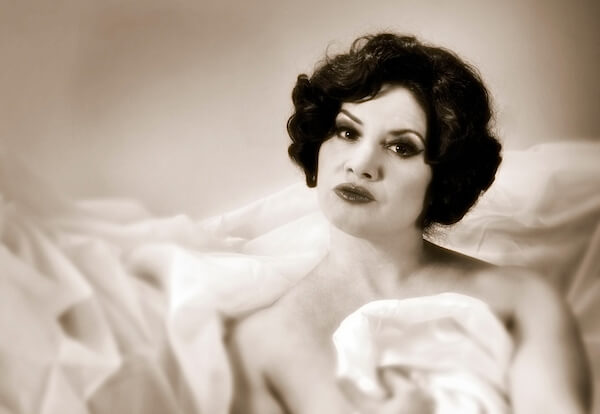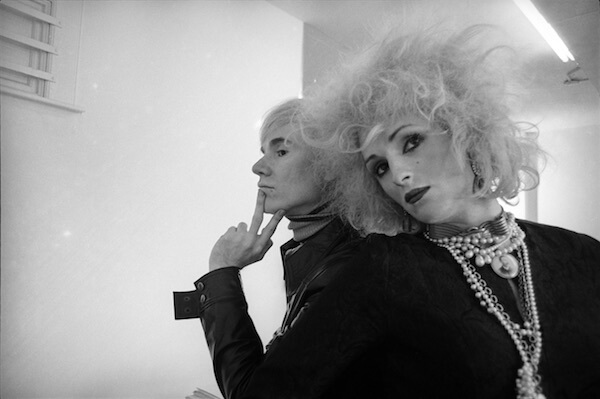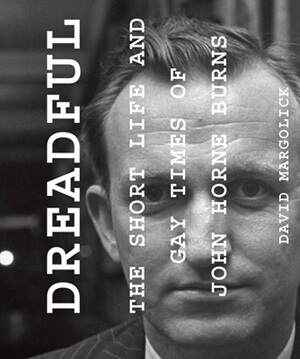FARRAR, STRAUS AND GIROUX
Lesbian history is, sadly, too often neglected in the efforts to rediscover and renew our queer pasts, and remains an area of study rich in material yet to be mined. We are reminded of this by a sparkling new triple biography of three now nearly-forgotten women who — in the first half of the last century —helped to shape our culture and redefine possibilities for their gender.
“All We Know: Three Lives,” by Wesleyan University professor Lisa Cohen, published by the venerable Farrar, Straus, is an inspiring and highly original example of the biographer’s art that not only restores to life three fascinating women, but as well offers us a rewarding portrait of a slice of queer culture in the post-World War I years, lifting the veil on the “Sapphic networks” of friends and lovers in the New York, London, and Paris of that era.
The three women in question knew each other but could not have been more different in significant respects. Still, all of them invented lives for themselves in which they could pursue their complicated same-sex loves without shame.
Wesleyan scholar Lisa Cohen enlivens the interwar years with stories of three remarkable women
Esther Murphy is for me the most intriguing of these three unusual women. A “profusely erudite New York intellectual,” she “talked and talked, dazzling her listeners with her vast memory, her extravagant verbal style, and her inventive renderings of the past.” But she drove her friends, including two of her closest — the towering literary critic Edmund Wilson and the novelist Dawn Powell — “to despair with her inability to finish the books she was contracted to write.”
Murphy was the daughter of the wealthy owner of the Mark Cross luxury leather-goods firm. A child prodigy who failed to live up to the expectations engendered by her brilliance and ended up publishing little, she is chiefly remembered today as the sister of Gerald Murphy and his wife Sara, the arts patrons who made living well into a personal art form and were the models for “Tender is the Night,” the novel by F. Scott Fitzgerald, a friend of Esther’s. The novelist John Dos Passos quipped that Esther “looked like Gerald only less pretty,” observing that “All the masculine traits seem to be concentrated in Esther, and the feminine ones in Gerald.”
Esther married twice — in the 1920s, to the rising young British Labour Party member of Parliament and writer John Strachey, who became one of the most widely-read Marxist theorists in the UK, and, in the ‘30s, to the notoriously queer presidential grandson Chester A. Arthur III, who under his adopted name of Gavin Arthur decades later became a well-known figure in San Francisco’s gay and hippie counter-culture. (Edmund Wilson would write that “for Esther to have married the grandson of Arthur means almost what it would have meant for Proust to have made an alliance with the Guermantes.”)
Wesleyan professor Lisa Cohen. VANESSA HANEY
Murphy wrote for newspapers and magazines off and on and achieved a certain measure of celebrity in the 1940s as a panelist and commentator on the popular ABC radio show “Listen, The Women!” — moderated by her close friend Janet Flanner, the celebrated New Yorker writer and lesbian — but she never finished her biography of Madame de Maintenon, the secret wife of King Louis XIV of France, who was her life-long obsession. When friends would ask how the biography was coming, she’d say airily, “Oh, it’s about a third done, a third done…” — a response she repeated for more than 20 years. An expert on France in the 17th and 18th centuries, Murphy also failed to produce the biography of Madame de Pompadour for which she had been contracted by Harcourt Brace.
Murphy interests me particularly because, like me, she considered France her second home — “I am not an American,” she declared to a friend — and because she was a perceptive student of the uses of history. She was also a keen political analyst, as Cohen demonstrates by examining her voluminous correspondence as well as her articles. Murphy was an early anti-fascist and a vociferous opponent of Neville Chamberlain’s policy of appeasement of Adolph Hitler, and —as the daughter of a progressive Tammany Hall political figure who was close to Al Smith — had finely tuned antennae for US politics.
She had lunches with President Franklin D. Roosevelt, for whom she campaigned, and became an ardent admirer of his wife Eleanor, whom she profiled for Harper’s Bazaar. And in her frequent trips to Paris between the two World Wars, she could be found holding forth in the City of Lights’ cafés to friends like Dorothy Parker, Flanner and her lesbian journalist partner Solita Solano, and the lesbian icon Natalie Barney, whom Esther also profiled. Murphy’s friends included the celebrated actress and lesbian Katharine Cornell, the theater producer and Fire Island entrepreneur Peggy Fears, Gertrude Stein and Alice B. Toklas, and the British novelist and memoirist Sybille Bedford, whom Bruce Chatwin has justly described as “one of the most dazzling practitioners of modern English prose.”
An “inspiration and resource for others” who “figures in the fiction of the first half of the twentieth century more than once,” Esther becomes in Cohen’s book the subject of a meditation on the nature of failure and its relationship to the American character that transcends traditional biography and becomes literature of high quality. Cohen’s prose is simply masterful and a delight to read.
Flanner wrote of Murphy, “The great tragedy is that her extraordinary intelligence, wit & historical comprehensions and interpretations will be remembered only by us and in fragments: and alas never written down in the really brilliant books she could have written whose non-existence is a loss to literature of a special quality and dazzling distinction.”
But thanks to Cohen and her omnivorous research — this book has no less than 50 pages of carefully sourced footnotes — Esther Murphy lives again in these fascinating pages. Cohen makes me wish I had known her.
Another of Cohen’s trio of unusual women, Mercedes de Acosta, was “a seductress and seduced… consumed by her intimacies with some of the most celebrated actresses and dancers of the twentieth century: Isadora Duncan, Marlene Dietrich, and Greta Garbo.” Raised in New York as the daughter of wealthy Spanish expatriates, de Acosta was star-struck from an early age and eventually became a Hollywood scenarist, while amassing an extraordinary collection of letters, playbills, clothing, and more that documented her relationships and love affairs with these women and others, including Eleanora Duse, Alla Nazimova, and Eva La Gallienne, “who signed in a letter that she felt she would die if Mercedes did not marry her.” Strikingly costumed, de Acosta had a boyishness that “endured as part of herself and her allure: Dietrich addressed letters to ‘Rafael’ de Acosta” and “Garbo, who was fond of referring to herself with masculine appellations, called Mercedes her dazzling boy.”
De Acosta’s autobiography, “Here Lies the Heart,” was “a mildly coded history of a corner of twentieth-century gay and lesbian life,” although some of the more explicit passages in her manuscript were excised by her publisher. De Acosta was assiduous in her attendance at the masquerade parties and drag balls and nightclubs “where men and women who violated gender norms were on display to insiders and outsiders. And their performances could be political acts [because] laws against wearing the clothing of the opposite sex were among the restrictions used to police homosexuality.”
In one of the suppressed passages in her memoir, de Acosta wrote, “Everyone rushed up to Harlem at night to sit around places with smoke and the smell of bad gin, where Negroes ‘in drag’ danced about with each other until the small hours of the morning. This had lasted all through the twenties and into the early thirties. What we all saw in it is difficult to understand now. I suppose it was the newly found excitement of homosexuality, which after the war was expressed openly in night clubs and cabarets by boys dressed as women, and was, like drinking, forbidden and subject to police raids, which made it all the more enticing. Youth was in revolt, and outwitting the government and getting the better of the police lent a zest to our lives.”
De Acosta lived a fan’s life, which under Cohen’s talented pen becomes an inquiry into “the intersections of popular culture and high modernism… the self-abnegation and self-aggrandizement of the devotee; the irrational, limitless passion of the collector; and the socially inopportune ardor of one woman for another.”
The last of Cohen’s biographical subjects, Madge Garland, was Britain’s High Priestess of Fashion, as influential in her time as Diana Vreeland was in ours. As the fashion editor of the British edition of Vogue, she and her lover — the magazine’s editor, Dorothy Todd, known as Dody — “became public figures who provoked sexual gossip on Fleet Street, London’s grubby male newspaper world. Their cachet as a powerful couple, the visibility of their ménage, and the contrast of their styles — one [Madge] young, thin and blonde, the other [Dody] older, heavier, and dark — impressed some and distressed others.”
The couple were the targets of a widely circulated “joke”: “What is a Sapphist? A Doderast who practices Todomy.” Cohen writes that “the question of what a Sapphist might be troubled the air in England between the 1918 libel suit that the dancer Maud Allan brought against a newspaper that alleged she was a lesbian, and the 1928 obscenity trial against Radclyffe Hall’s ‘The Well of Loneliness.’ The question was part of a relatively new way of thinking about sex — the idea that a lesbian was a particular type of person — that was making certain women newly visible, or visible in new ways.”
Madge and Dody turned British Vogue into an adjunct of the Bloomsbury group of writers and artists as well as the promoter and arbiter of the avant-garde in the arts and fashion. The roster of writers they befriended and recruited to write for the magazine is truly astonishing, ranging from Virginia Woolf and Rebecca West to Gertrude Stein. They “treated the magazine as a kind of salon over which they preside.”
But the magazine’s American owner, Condé Nast, unhappy with what he considered the publication’s lack of commercialism, fired Dody and Madge in violation of their contract and forced them to drop a lawsuit and accept a paltry cash settlement by threatening to expose their lesbian relationship. In 1934, after the couple’s relationship foundered on Dody’s alcoholism, Nast rehired Madge as fashion editor, and she rebuilt her career as a major force in the British fashion and textile industries and became a regular fashion commentator for the BBC, on radio and later television. Garland went on to create the Fashion School of the Royal College of Art and was dubbed by the press “The First Professor of Fashion.”
In 1952, Madge married a queer friend from the 1920s, Leigh Ashton, the director of the Victorian and Albert Museum and “one of the most creative curatorial figures of the twentieth century.” Ashton “needed protection from the ferocious policing of homosexuality in postwar England, which did not respect status or celebrity. After the relative openness of the interwar period, harassment and prosecution of even accomplished or socially prominent men for homosexual acts were constant. The arrests and convictions of the actor John Gielgud and of the writer Rupert Croft-Brooke in 1953, the arrest of Michael Pitt-Rivers, Edward Montagu, and Peter Wildeblood in 1953, and their very public trials the following year; and the arrest of the mathematician and computer scientist Alan Turing for homosexual offences in 1952…are just a few examples of the climate for men like Ashton in those years.” (For more on the persecution of British homosexuals in this period, see my September 6, 2007 Gay City News article, “Free the Buggers: Britain and the Wolfenden Report.”)
Garland continued to write about fashion well into her eighties when nearly blind, and her students and protégés included the most famous names who dominated British fashion and design for half a century.
There is enough bed-hopping by both sexes in this book to make it a satisfying read for gay men as well as lesbians, and it is Cohen’s particular brilliance that makes her choice of this trio’s interconnected stories groundbreaking.
“All three women,” she writes, “knew each other and were commentators on one another’s lives. Their stories reveal vital, rarely explored networks of friends, colleagues, and lovers. All three married, but were primarily committed to other women; all participated in the close-knit, fractious lesbian networks of New York, London, and Paris… For all three, sexual freedom, difference, and censure were crucial to their experiences of modernity and to their work as thinkers about modernity.”
Cohen is a first-rate intellectual who brings a sharply inquiring sensibility to the reflections about modernism that permeate these pages. “All We Know: Three Lives” is a triumph — gossipy (but never vulgar), witty, compassionate, thoughtful, and very, very smart — and merits pride of place on any queer’s bookshelf. May Cohen’s tribe increase, this superb book encouraging others to tread the many remaining unexplored paths of lesbian history.
ALL WE KNOW: THREE LIVES | By Lisa Cohen | Farrar, Straus and Giroux | $30 | 429 pages



































